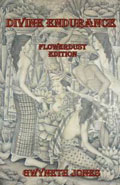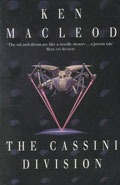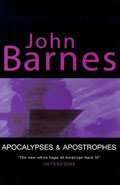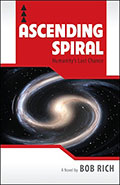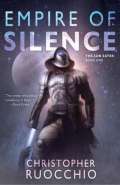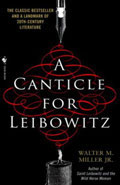Dune Series
By Frank Herbert
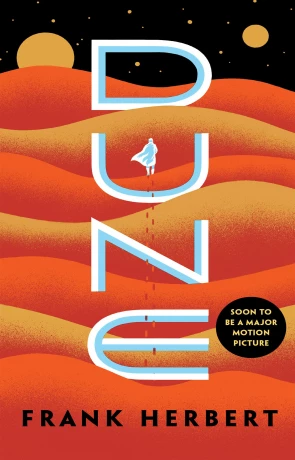
- Dune Series
-
Author: Frank Herbert
- Series: Dark Eden Series
-
Publisher: Ace Books
- ISBN: 978-0340960196
- Published: August 1965
- Pages: 2782
- Format reviewed: Paperback
- Review date: 20/01/2020
- Language: English
For a span of twenty years, genre fiction fans had the opportunity to live through what many call the greatest science fiction tale of all tune, Frank Herbet’s epic Dune series. The saga consists of six novels: Dune (1965), Dune Messiah (1969), Children of Dune (1976), God Emperor of Dune (1981), Heretics of Dune (1984), and Chapterhouse: Dune (1985).
1956 was a life changing year for Frank Herbert, for he learned of a project enacted by the U.S. Department of Agriculture. The USDA, concerned over the drifting of Oregon’s sand dunes, began planting grass in order to stagnate their movement. This gave Herbert an idea for an article, to be titled “They Stopped the Moving Sands.” While ultimately unpublished, Herbert’s fascination with the dunes, plus a concept for a story of a boy prophet circling in his mind, lead to a series still being discussed over sixty years later.
-
DUNE
Set in the far distant future, Dune tells the story of Paul Atreides, heir of House Atreides, and his battle against the evil House Harkonnen, the sworn enemy of the Atreides, over control of the desert planet Arrakis, also known as Dune. With control of the planet comes control of the spice, Melange, produced by the giant sandworms who inherit the desert and is well sought after and addictive. A story of political intrigue, colorful characters, and immense worldbuilding, this is a science fiction classic along the lines of The Lord of the Rings as a fantasy classic. Paul himself becomes the Kwisatz Haaderach, a godlike figure predicted for thousands of years by the Bene Gesserit, a powerful religious and political group of women.
Within Dune’s pages, Herbert creates a vast world, setting the stage for the subsequent volumes, all unique in their own right. Despite this, Dune remains the standard, for it is the most complete story; some fans choose to end the tale at the end of book one. Even without its sequels to build the story more, Dune is so full of a solid mix of snappy dialogue and action set pieces and sequences so as to make the reader turn the pages.
DUNE MESSIAH
Set just twelve years after the events of Dune, Paul Atreides is now emperor. The novel is the shortest in the series and the plot is a simple one- a group forms together to plot against Paul to eliminate him. Herbert’s main theme is the idea of how dangerous is it to canonize an individual, a dictator. A story of religious fanaticism, Dune Messiah shows Dune’s hero, Paul, as a conflicted figure, at times villainous. This dramatic shift in tone initially set some readers off, missing the grand, heroic scale that was sprinkled throughout Paul’s journey in Dune. Over time, many readers have come around on the novel for its uniqueness within the Dune universe.
CHILDREN OF DUNE
As the title suggests, children are the key focus of this novel. Paul’s twins, Ghanimma and Leto II, begin to learn political maneuvering in the wake of their father’s exile at the end of Dune Messiah. Nine years have passed and the twins are being groomed for power by Paul’s sister, Alia. Threats against the twins are abound throughout the novel, the main one being the possession of Alia by the Baron Harkonnen, head of House Harkonnen, long dead at Alia’s hands near the end of Dune.
The novel harkens back to the epicness that is Dune. While some character fates seemingly come out of the blue, it is the fate of Leto II which is most intriguing. Allowing tiny sand trout, the beings ultimately poised to turn into sand worms, to attach to his body, he transforms into half man/half worm in order to preserve his life span for many millennia, thus allowing for a smoother road to “The Golden Path,” a long storied plan of the Kwisatz Haderach that would bring peace to the world. Leto II considers this a sacrifice - one Paul refused to make.
GOD EMPEROR OF DUNE
Set 3,500 years after the events of the previous novel, Leto II remains the man/worm hybrid, known as the God Emperor. The sandworms have died off. Dune is no longer a desert planet - it has turned into a lush, green land with flowing water. A hulking beast, Leto II reigns over the planet, creating his own religion and threatening its inhabitants into following his Golden Path. As a result, there is no crime and everyone seemingly gets along. However, the various factions that make up the Dune universe occasionally hatch plots against the God Emperor.
Two interesting things about Leto II in this fourth volume are his human feelings popping up and his struggle to rule as a tyrant for the greater good. He struggles with both ideas, for he truly loves someone for the first time and states, “A parent must be generous as well as severe.” He proves to be a tragic figure in this sense, and his inner turmoil is fascinating to read throughout.
HERETICS OF DUNE
1,500 years have passed since the events of God Emperor of Dune. Partially taking place on the planet Chapterhouse, home to the Bene Gesserits, their mission is to continue Leto II’s Golden Path, long after his death. The focal point of this novel is the return of those who took part in ‘The Scattering,’ a decision to flee Dune after the death of Leto II and the breakdown of his society. Most notable of those returning is the Honored Matres, a secret society of women who formed in the wake of Leto II’s death.
The rivalry between the Bene Gesserit and the Honored Matres is a highlight of the novel. At the center of their conflict is a young woman named Sheeana, who has an ability to control the sandworms, now returned to the planet as a result of Leto II’s death.
The ending of Heretics of Dune is one of the more memorable of the series. The novel serves as a sort of “first half” of a story concluded in the final volume.
CHAPTERHOUSE: DUNE
Chapterhouse: Dune takes place entirely away from Dune, given the twist ending of the previous novel. The feud between the Bene Gesserit and the Honored Matres continues, with the Bene Gesserit attempting to train a captured Honored Matres in their ways. This novel serves as a second half of the story which began in Heretics of Dune. New characters are introduced. Many ideas are thrown into the mix as well. The novel even ends on a cliffhanger, with certain characters fleeing on a ship. While the cliffhanger sort of works as an ending, giving a sense of hope and wonder regarding the future of characters we’ve cared about for so long, it is clear that another novel was planned before Herbert’s death in 1986.
According to Frank Herbert’s son Brian, this was the case, with a seventh and final novel planned to conclude the series. Along with author Kevin J. Anderson, Brian took his father’s notes to finish the series, breaking the final volume into two parts: Hunters of Dune (2006) and Sandworms of Dune (2007).
-
In 2019, Ace Books, an imprint of Penguin Random House, published brand new covers of the five sequels to Herbert’s original classic in order to match the cover art of the newest (at the time) edition of Dune. With fantastic artwork done by Jim Tierney, this new set of the Dune series showcases the grand, epic scale of the six novels. This commission of Tierney from Ace was timely, as with the coming of the new year puts fans less than a year away from a new silver screen adaptation of Dune. Directed by long time Dune fan Denis Villeneuve (Arrival, Blade Runner 2049) with a stunning cast, Dune is Villeneuve’s dream project. Fans of the series should get excited.
Written on 20th January 2020 by Michael Feeney.
